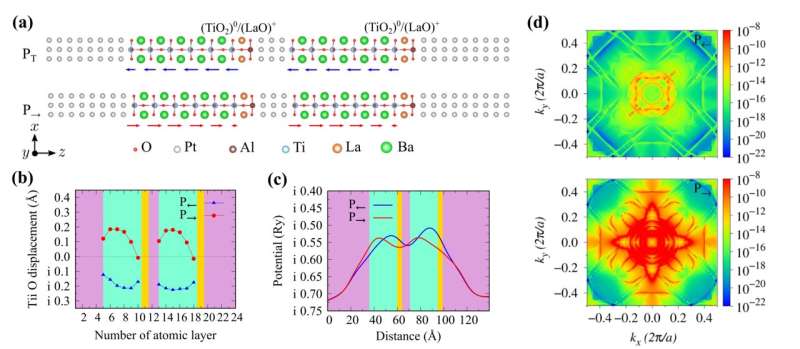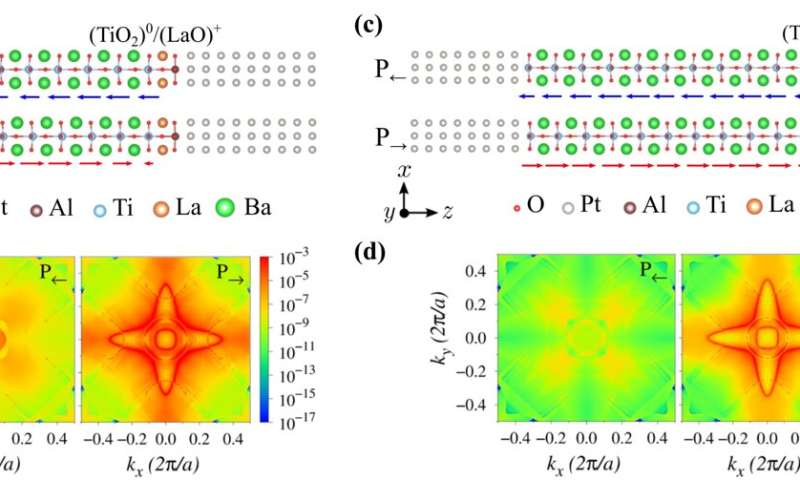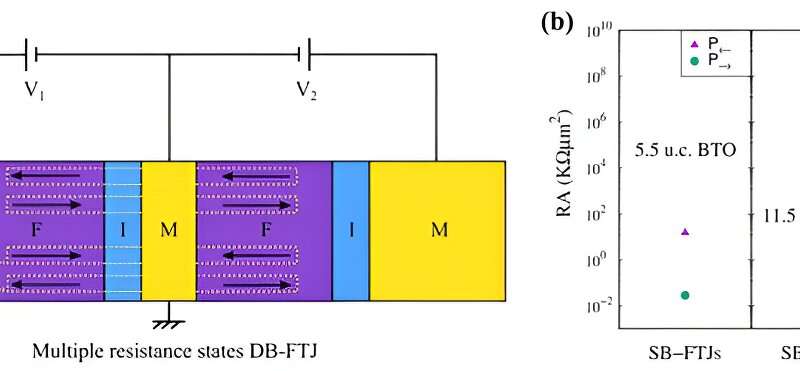This article has been reviewed according to Science X's editorial process and policies. Editors have highlighted the following attributes while ensuring the content's credibility:
fact-checked
trusted source
proofread
Double barrier design proposed to enhance tunneling electroresistance

Based on density functional theory analysis, a research team led by Prof. Zheng Xiaohong from the Hefei Institutes of Physical Science of the Chinese Academy of Sciences proposed that the double barrier structure can greatly enhance the tunneling electroresistance (TER) of ferroelectric tunnel junctions (FTJs), and demonstrated that the double barrier ferroelectric tunnel junction (DB-FTJ) can realize multi-state storage.
The results were published in npj Computational Materials.
FTJs have attracted considerable attention as potential non-volatile memory devices. The structure of FTJs consists of metal electrodes on both sides and the intermediate ferroelectric tunnel barrier in between.
Reversing the polarization direction of the ferroelectric material leads to a large change in conductance, creating high and low conductance states that can be used as ON and OFF states in binary memories. A key research focus is to develop new methods for achieving higher TER ratios that quantify the change in conductance between the two polarization states.
In this study, the researchers designed the Pt/BaTiO3/LaAlO3/Pt/BaTiO3/LaAlO3/Pt DB-FTJ and performed density functional theory calculations to simulate its transport properties. They found that the switching between the ferroelectric left and right polarization states in the proposed DB-FTJ produces a huge TER ratio of 2.210×108% (indicating that there is a huge difference in the transmission coefficient between the two polarization states), which is at least three orders of magnitude larger than that of the Pt/BaTiO3/LaAlO3/Pt single barrier ferroelectric tunnel junction (SB-FTJ).
-

Atomic structure and transport properties of SB-FTJs. Credit: Xiao Wei) -

Multiple resistance states DB-FTJ. Credit: Xiao Wei
The basic idea is rooted in two facts. First, the transmission coefficient of a double barrier structure, consisting of two single barriers in series, is related to the product of the transmission coefficients of the two single barriers. Second, the square of positive numbers greater than one increases exponentially. These principles are perfectly revealed in the DB-FTJ.
Researchers also proposed that two additional polarization states with head-to-head and tail-to-tail ferroelectric polarization can be achieved by separately controlling the polarization direction of each barrier, resulting in multiple resistance states.
This study demonstrated that, in the design of FTJs, the double barrier structure can greatly improve the TER ratio of FTJs and make them promising for multi-state data storage.
More information: Wei Xiao et al, Greatly enhanced tunneling electroresistance in ferroelectric tunnel junctions with a double barrier design, npj Computational Materials (2023). DOI: 10.1038/s41524-023-01101-9
Provided by Chinese Academy of Sciences





















